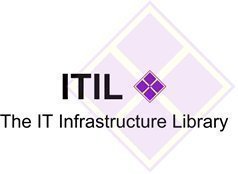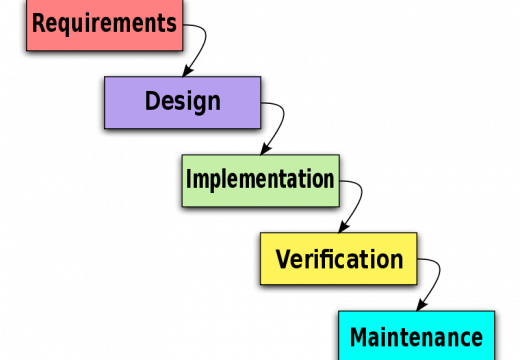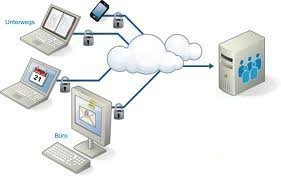ITIL is an acronym for Information Technology Infrastructure Library. ITIL are a series of books and training manuals that outline and explain the practices that are the most beneficial to IT services (usually manager focused). The goal of ITIL is for managers to have extremely high standards in IT value, as well as high financial quality in day to day IT operations. ITIL procedures are supplier independent and include instructional materials on IT infrastructure, operations and development issues.
It should be noted that the acronym ITIL is a registered trademark, and the books included in the ITIL library are copyrighted as well.
ITIL has had a long history of development, and many IT professionals believe that ITIL grew out of the yellow books, which were best practices and guidelines that were used in IBM during the 1980’s, however it wasn’t until the middle of the 1990’s that ITIL become a formal library of IT best practice frameworks. The newest version of ITIL (version 3) is set to be released in May of 2007. The ITIL v3 has been anticipated by many IT professionals all over the world for the last few years. It is expected that five core texts will be packaged in the publication, they include: Service Strategy, Service Design, Service Transition, Service Operation and Continual Service Improvement.
The original ITIL library included several books that covered specific themes in IT Service Management. However, after the original publication, the books in the library grew to over 30 volumes. Since 30 volumes can be cumbersome, difficult to read and digest and expensive to purchase as a complete set, the second version of ITIL has been consolidated.
ITIL v2 was packaged differently; version 2 was sold in sets that related to process guidelines and included several different aspects of IT including applications, services and IT management. It should be noted that the most popular sets being sold in ITIL v.2 include the services set, specifically Service Support and Service Delivery. While these two sets are by far the most popular, the ITIL library used as a whole is extremely comprehensive and a good foundation for any business using IT components today.
Following is a list of the books included in ITIL version 2:
- Introduction to ITIL: While not one of the core competencies of ITIL, this publication gives the reader a comprehensive overview of the advantages, methods used and wide array of publications available in the ITIL library. This introductory book helps both the individual and organization acquire a thorough understanding of how ITIL can be an invaluable tool when put into action.
- Service Delivery- Part of the IT Service Management Set, the service delivery book is primarily focused on being proactive and looking at the long term for what businesses require from its ICT (information and communications technology) provider to make sure that the proper support is being given to its businesses users. This includes Service Level Management, Capacity Management, IT Services Continuity Management, Availability Management and Financial Management.
- Service Support- Service Support is also part of the IT Service Management Set. This book is focused on the businesses end user and making sure that all end users of the organization have appropriate services to run and complete their tasks accordingly.
- ICT Infrastructure Management- ICT is an acronym for information and communications technology, this manual includes best practices for several facets of the ICT infrastructure including ICT design, planning, deployment, operations and technical support.
- Security Management- ITIL security management focuses on the best practices and guidelines to make sure that information is stored safely and protected against risks of hacking and theft. In today’s business world, it is extremely important that sensitive data remains private and confidential.
- Business Perspective- This book details the best practices and addresses many issues in IT. This book tries to facilitate understanding regarding key issues in the IT along with quality management in the IS (Information Service) field.
- Application Management- This set includes best practices and guidelines in order to improve quality of software applications and support of these applications through the entire development life cycle.
- Software Asset Management- Software asset management is part of IT service management and looks at how software should be treated as an asset with value. This book details how businesses can save money through policies and procedures that underline using software expeditiously.
- Planning to Implement Service Management- provides business with a framework for analyzing and understanding what is needed when instituting certain IT processes and approaches. Many times a CSIP (Continuous Service Improvement Program) is implemented, along with other ITIL books and disciplines.
- ITIL Small Scale Implementation- This discipline is used for businesses with smaller ITIL departments. This book covers many best practices and guidelines used for larger implementation, but focuses as well on the important roles and responsibilities within a small unit and ways to avoid conflicts between ITIL priorities.
Advantages of ITIL
There are several benefits for using the Information Technology Infrastructure Library for many of your IT business needs and one main benefit is that through the guidelines and best practices that are taught in the library, your business can save a tremendous amount of money once implemented.
Another advantage of ITIL is that it will help your IT department organize and manage many different disciplines using one comprehensive volume. ITIL is the leader in IT guidelines and best practice publications; it has been tested in real world environments for over a decade and is proven to work.
Disadvantages of ITIL
While the advantages usually far outweigh the disadvantages, there are a couple of criticisms that are worth noting including the idea that most IT professionals consider ITIL a holistic approach to IT management. While ITIL is comprehensive, even the publication itself does not consider itself a holistic approach to IT management.
In addition, there are also accusations by some IT professionals that following only the ITIL due to its acceptance by many IT managers as the authoritative source has actually led to many businesses to skip pragmatic solutions for their specific business needs. Finally, another criticism of ITIL is that while some topics are covered extensively and are of high value, other topics may not receive enough emphasis with quality being uneven in certain publications.




althamsh
hi,
I need some infirmation about ITIL is it belongs to networking if it is belongs to networking please let me know is there is way to take a trening for this please do the needful
Regards,
Althamash